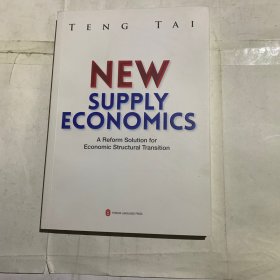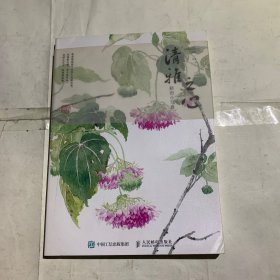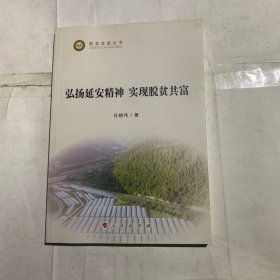
新供给主义经济学
¥ 29.63 2.3折 ¥ 128 九品
仅1件
河北保定
认证卖家担保交易快速发货售后保障
作者滕泰 著
出版社外文出版社
出版时间2020-12
版次1
装帧平装
货号0305053
上书时间2024-11-14
- 最新上架
商品详情
- 品相描述:九品
图书标准信息
- 作者 滕泰 著
- 出版社 外文出版社
- 出版时间 2020-12
- 版次 1
- ISBN 9787119125510
- 定价 128.00元
- 装帧 平装
- 开本 16开
- 纸张 胶版纸
- 页数 206页
- 字数 150千字
- 【内容简介】
-
¡¡¡¡Over the past four decades since the start of reform and opening up£¬theories proposed by Western economists have greatly influenced China\'s economics community.However£¬ China£¬ at each stage of reform£¬ has also given birth to its own economic thought. Examples include the dual-track reform theory of the 1980s£¬ the theories of ambiguous property rights and transitional institutional afrangements of the 1990s£¬ and the tournament theory More recently£¬ new structural economics has systematically reflected on the existing theories of development economics.
¡¡¡¡In recent years£¬ Dr. Teng Tai\'s new supply economics has also received attention and generated an impact. FOf more than a decade prior to 2012£¬China\'s economic policymakers had put too much focus on such short-term issues as fluctuations of aggregate demand£¬ leading to the inevitable neglect of long-term problems such as supply-side potential for economic growth£¬and the hidden structural and systemic flaws of reform. In 2012 and 2013£¬Df. Teng published the \"Marufesto of New Supply Economics\" and The
¡¡¡¡Wealth of the People£º New Supply Economics as a Patb to Long-Term Prosperity£¬ call-ing for reform from the supply side. Gradually£¬ his new supply economics has matured.
¡¡¡¡The term \"supply-side economics\" emerged in the 1980s when the US Reagan administration\'s policies promoting tax reduction£¬ deregulation and competition drew attention. The Supply-side Revolution£º An Insiders Account of Poticymaking in Washington by Paul Craig Roberts was published in 1984 as a summary of such policies. The attention drawn to the supply side has always been related to an excessive policy focus on the demand side. How-ever£¬ quite different from the promoters of supply-side economics in the 1980s£¬ Teng argues that Say\'s Law of Markets is invalid in most cases. For instance£¬ in the context of excessive or outdated supply£¬ supply is unable to create enough corresponding demand£¬ and that is why external intervention is needed. Currendy£¬ the structure of China\'s economy is being Upgfaded. In Teng\'s words£¬ supply meets demand in the old market£¬ but creates demand in the new market. In the long run£¬ new supply creates demand£¬ and supply structure upgrades lead to consumption upgrades£» in the short term£¬ de-mand also creates supply£¬ and consumption also drives supply.
¡¡¡¡I have known of Dr. Teng for a long time - he was the president and chief economist of China Galaxy Securities Research Institute from 2005.In 2010£¬ he became the vice president and chief economist of Minsheng Securities. Later he established the WANB Institute£¬ an independent think tank. Usually economists with similar background would put more focus on predicting economic indicators£¬ while Teng has managed to extend lus fesearch to economic policies and the academic arena. He attended many policy consultations held by centfal Party and government departments such as the Policy Research Office of the CPC Central Committee£¬ the Research Office of the State Council£¬ the Central Leading Group for Financial and Economic Affairs£¬ and the National Development and Reform Commis-sion. He was also invited to two economic symposiums hosted by the Chi-nese Premief. Now£¬ he has delved into the theOfetical study and elaboration of new supply economics. - 【作者简介】
-
滕泰。有名经济学家,万博兄弟资产管理公司董事长,万博新经济研究院院长,新供给主义经济学的创立者和代表人,软价值理论的创立者和代表人,复旦大学、民大学、财经大学兼职教授,企业青联委员。曾担任银河证券研究所所长、2010年起担任民生证券副裁兼首席经济学家等职务,2012年创办万博兄弟资产管理公司,著有投资银行、滕泰透视通胀、新财富论、财富的觉醒、民富论——新供给主义百年强国路、供给侧的觉醒——从财富原点再出发、软财富、供给侧改革等专著。 - 【目录】
-
Foreword ¢ñ
Foreword ¢ò
Preface
Acknowledgements
Addressing a State Council Seminar
Chapter ¢ñ New Supply Creates New Demand
I£®Supply Meets Demand in the Old Market and Creates Demand in the New Market
¢ò£® New Supply Creates New Demand
Chapter ¢ò Growth Model of New Supply Economics
¢ñ£® Five Wealth Sources£º Preconditions£¬ Factors£¬ and Driving Forces
¢ò£® Supply-side Growth Models
¢ó£® Potential Economic Growth Driven by New Supply
Chapter ¢ó Changes in the Supply Structure Behind Economic Cycles
¢ñ£® Different Endogenous Economic Cycle Theories
¢ò£® Supply Structure Changes Behind Economic Cycles
Chapter ¢ô Reforming and Upgrading Supply Structure
¢ñ£® Replacement of Ageing Supply by New Supply
¢ò£® Proper Role of Government in Supply Structural Transition
Chapter ¢õ Deregulation£º Removing Supply Constraints from Administrative Controls
Chapter ¢ö Tax Cuts£º Removing the Supply Constraints of High Taxation
Chapter ¢÷ Bfeaking Up Administrative Monopoly£º Removing
Constraints on Competition
Chapter ¢ø Removing Constraints on Factor Supply
¢ñ£® New Dividends£º Removing Factor Supply Constraints
¢ò£® How to Remove Constralnts on Labor Supply
¢ó£® How to Remove Constraints on Capital Supply
¢ô£® How to Remove Constraints on Land Supply
Chapter ¢ù Removing Constraints on Technology Supply
¢ñ£® New Dividends Through Removing Technology Supply Constraints
¢ò£® How to Remove Constraints on Technology Supply
Chapter ¢ú Removing Constraints on Institutional Changes
¢ñ£® New Dividends by Removing Constraints on Institutional Changes
¢ò£® How to Remove Constraints on Institu Uonal Changes
Chapter ¢û Supply Shocks on Price Fluctuations
¢ñ£® Supply Shock£º The Impact of Raw Material Costs on Prices
¢ò£® Supply Shock£º The Impact of Labor Costs on Prices
¢ó£® Impact of Supply Cycle - Price Changes in Agricultural Products
¢ô Impact of Supply Structure Upgfade and Other Factors on Prices
¢õ Price Control Policies of New Supply Economics
Chapter ¢ü Income Distribution Based on Supply-side Contributions
¢ñ£® Income Distribution Based on Supply-side Contributions
¢ò£® Income Distribution Based on Factor Costs and Scarcity
¢ó£® An Income Distribution Mode Balancing Efficiency and Equality
Bibliography
点击展开
点击收起
相关推荐
— 没有更多了 —























以下为对购买帮助不大的评价